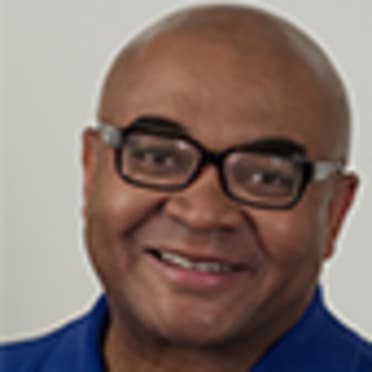This story was excerpted from Thomas Harding’s Rockies Beat newsletter. To read the full newsletter, click here. And subscribe to get it regularly in your inbox.
ST. LOUIS -- Long before Rockies third baseman Ryan McMahon developed into a three-time Gold Glove Award finalist, balls hit his way could be both must-see and hard-to-watch at the same time.
McMahon committed 32 errors at third base at Single-A Asheville in 2014 and 39 at High-A Modesto in 2015.
“My teammates used to mess around, telling me, ‘If it’s hit right at you, we wait -- to make sure you make the play,’” McMahon said. “If it was a hard play, they’d start coming in [to the dugout] because I would make great plays. I couldn’t make the routine play.
“I’m just really happy, because it’s something I had to work on a lot.”
Could the work pay off in an invitation to the All-Star Game? Before his 0-for-4 night in the Rockies’ 3-2 victory over the Cardinals at Busch Stadium on Thursday night, McMahon led National League third basemen in on-base percentage, OPS and walks, and was second in batting average, slugging percentage, home runs and total bases. He also was third in RBIs.
“That’s one of those things that if it happens, it happens,” said McMahon, who debuted in the Majors in 2017, and has been the primary third baseman since the Rockies dealt Nolan Arenado to the Cardinals before the 2021 season. “If it doesn’t, that’s not how I measure it -- it’s what I’m doing and how I’m helping us.”
So how did McMahon go from an adventure to a delight at third base defensively?
The Rockies drafted McMahon in the second round in 2013 as a third baseman. But that was also the year Arenado broke through and became the Majors’ best player at the position during his time with Colorado. So the club began playing McMahon at first and second base.
For McMahon, techniques on the right side -- especially at first base -- unlocked him as a fielder. Current Rockies first-base coach Ron Gideon was McMahon’s tutor. But a third baseman was created.
“I was always a two-handed fielding guy,” McMahon said. “At first base, the glove was so big I was missing balls -- they were hitting off the heel of the glove. So it got me really comfortable with just one hand.
“Now if you watch me play defense, I maybe use two hands if a double play ball is taking me just to the side. Besides that, it’s with one hand.”
Of course, this flies in the face of coaching many players receive from their first ground balls. But it works enough for McMahon that he builds his practice routine around his own fundamentals. Many Rockies players come to third-base coach Warren Schaeffer for drills with a machine where they can be on one knee or two and can practice one-hand or two-hand catches. McMahon only takes grounders off the bat at his position.
McMahon demonstrated that, when reaching with two hands, it was tougher to put his body in position for the next move -- the footwork to throw. The ball entered his glove more naturally as well. He found that a technique easily taken for granted for a first baseman -- catching a grounder and flipping to the pitcher -- was transferable to playing third base.
“The smoothness and how much time I had, it just translated,” McMahon said. “It could have been just a light-switch moment for me.”
